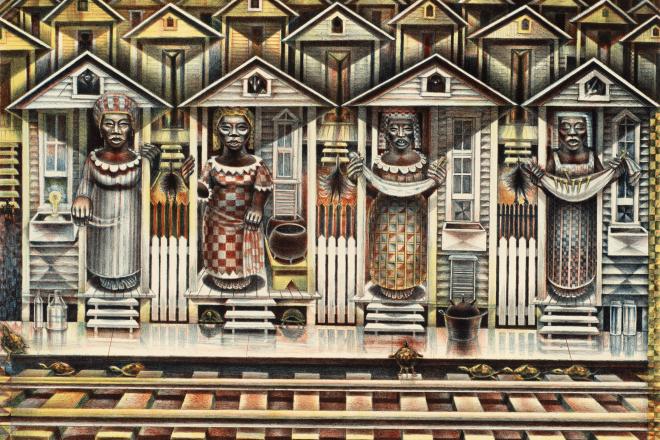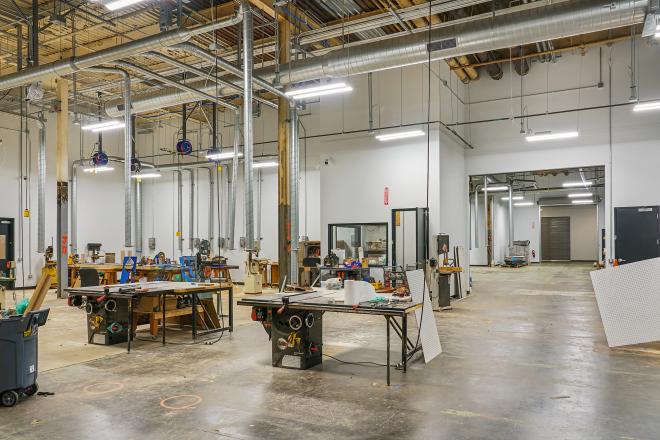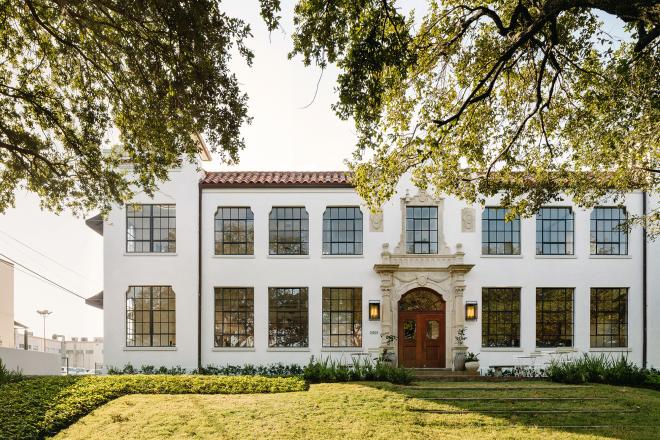Douglas Milburn’s The Last American City: An Intrepid Walker’s Guide to the City of Houston (Texas Chapbook Press 1979) is available to anyone who really wants to find it on eBay, Amazon, or in the Local/Texana sections of used bookstores across the city. However, in an ideal world, free copies would be distributed at every coffee shop lining Westheimer Road and Montrose Boulevard, if only for the purpose of inspiring someone else to write an equivalent for today’s Houston. Never before or since has our city been given such a unique and fitting book-long treatment.
Its voice is wildly eccentric. It is in equal parts Venturi, Gonzo, Huxtable, urban myth, and Fodor’s. Here’s his take on the newly built downtown Hyatt Regency:
No late 20th century American City is complete without its Hyatt atrium and this is Houston’s, all thirty stories of it. The fact that it is not by John Portman but by Caudill, Rowlett & Scott hardly detracts from the effect. Ahead are the de riguer glass elevators, which are always fun. Refreshments may be taken at the revolving Spindletop (recommended, at least for Gregory Peck (3/4 *) fans: the Tequila Mockingbird). The convenient balconies have served as the staging area for one suicide. For several years the lobby contained one of those soaring stainless steel sculptures that you can never figure out how it stays up. Apparently, the sculptor didn’t quite figure it out either because it eventually collapsed (no one was injured).
Few had written about Houston in such a way before. Stephen Fox asserts the importance of the book in the creation of a critical dialogue on the city, “Milburn was very much a product of the liberated pop culture tide of the late 1960s and 70s, and he expressed many thoughts on the city that had previously never been expressed by the establishment in the city. This, combined with his cultured background (a German professor at Rice as well as a member of the local counterculture) led to a unique book.” The overall effect “lends comparison to the Orange Show – a unique work of pop art in the city of that time.”
Yet Milburn’s passion and detail has had few peers since The Last American’s City publication. Every page blends myth, history, off-the-wall political analysis, and practical knowledge. Some questions that can be answered with this book: What was the best convenience store in town? (Answer: the 7-11 at 603 Bayland.) What map was “best for the suburbanite?” (Answer: Gousha.) What is “The Ghost of Sul Ross Street?” (Answer: too long to explain here.) Here is his advice for a Sunday afternoon out:
“Enter The Galleria on the south side (Entrance No.8) off Alabama. Drive down to the first level. Bear right around the ramp and park somewhere on this level – Level B, in either Zone 8 or 9. Intrepid Drivers’ Note: Drive here some Sunday when the garages are mostly empty, and spend a surreal half hour exploring these vast, gray spaces with their nautilus-like spirals and their bleak perspectives occasionally broken by glimpses of the interior of the mall. At several points one emerges on the roof where whole new vistas unfold.”
The ending “Assays” are fascinating ruminations that attempt to apply some sort of meaning to Houston’s chaos, and remain relevant. The black-and-white photography by Tom Richmond is also top-shelf, especially the gorgeous cover of a proud Post Oak Central One alone in front of passing clouds. The book’s “walking guide” structure, though odd and at first seemingly random, is the perfect formula for letting Milburn’s ruminations run free.
That Houston is thriving, wide-open, and supremely self-confident, and Milburn’s book is the perfect literary equivalent for that time – nothing else matches the wide-eyed excitement that living in that city generated. It is “Houston the upstart, the latecomer, the rowdy, the parvenu, the brash. Houston the improbable, the impossible, on which the past weighs hardly at all but powerfully touched and drawn by the future, the city of affirmation, Houston, the last American city.”










